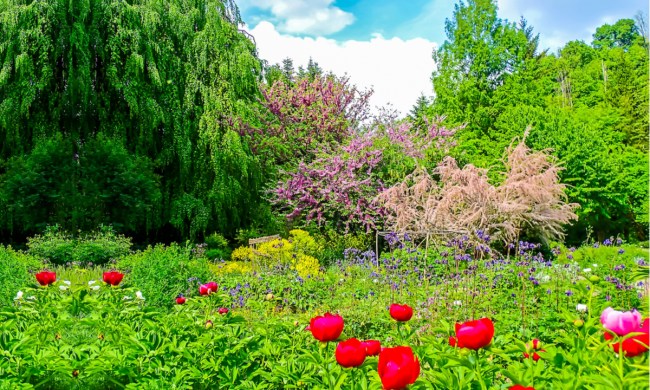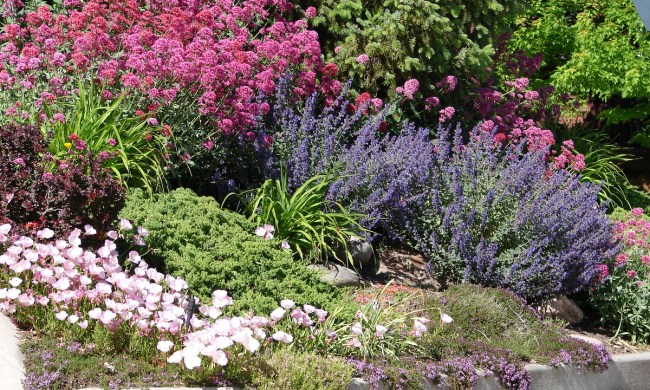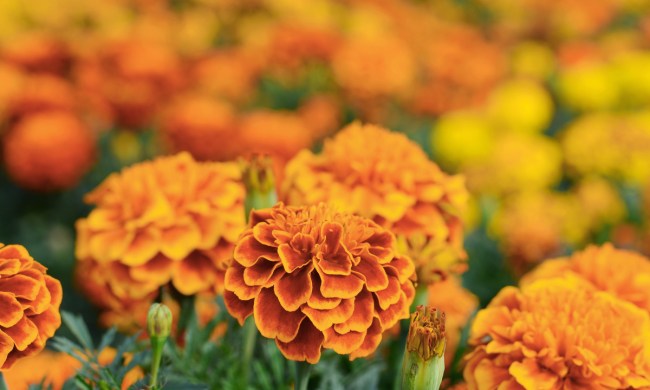Although classic flowers, such as Knock Out roses and tulips never go out of style, you can cultivate blooms with quirkier shapes and growth patterns to give your space a pop. When planning your growing season garden, one landscape style to consider is the fairy-tale garden. While the cottagecore aesthetic might be associated with the early days of the pandemic, its appeal is timeless, especially during springtime alongside those cute woodland creature decor pieces. If a quaint “Alice in Wonderland“ garden is your vibe, here are flowers to track down as you prepare your space for spring and create a fairy-tale garden landscape.

Lily of the valley
Lily of the valley, or Convallaria majalis, is known for its clusters of dainty white bell flowers. These delicate, sweet-smelling blooms make for beautiful ground cover in early spring, if you love a romantic English cottage style. The lily of the valley plant can also have bright red berries in the fall, but be careful around kids and pets because all parts of the plant are poisonous if ingested.
This flower does best in partial shade with evenly moist soil, but it can adapt to other areas depending on how much you water it. With time, an established plant will be relatively drought tolerant and won’t need feeding.
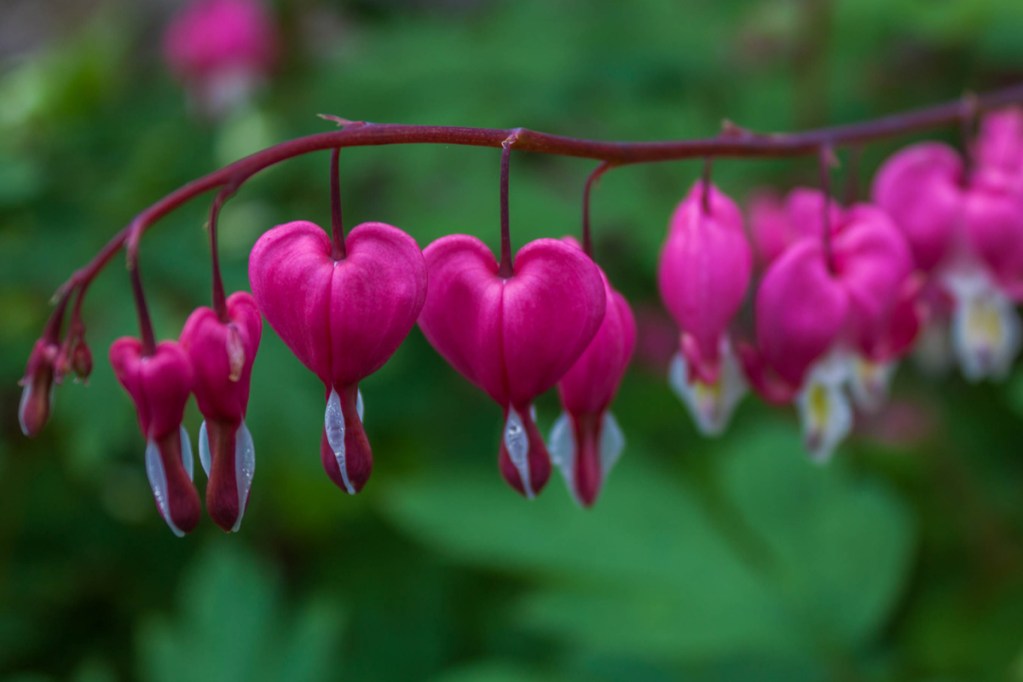
Bleeding heart
The embodiment of fairy-tale romance, the bleeding heart, or Dicentra spectabilis, is a late spring flower that’s all about its arching branches of dangling, heart-shaped blossoms. You want to pick out this stunning plant right before it sprouts. Because it tends to grow many rhizomes, it does best in a garden bed rather than bound within a container.
It can thrive in partial or full shade, often going into dormancy by midsummer. That said, it can continue blooming in cool summer climates with rich, consistently moist soil.

Bird of paradise
Although sometimes kept as a houseplant, the bird of paradise, or Strelitzia reginae, does best as a stunning landscape plant with its tall, fanning stalks, glossy leaves, and beautiful orange and purple crested flowers that resemble birds. It takes a while to flower, tending to produce flowers around its sixth year of being planted.
The stalks are generally around 3 to 4 feet tall, while the crested blooms are roughly 6 inches long. To grow prolifically, a bird of paradise plant needs at least 3 to 4 hours of full sun daily and appreciates bimonthly growing season feedings with standard liquid fertilizer.

Passion flower
If you’re searching for unique flowers, the passion flower should be at the top of your list for your spring garden. As delicate as the passiflora plant looks, it’s a pretty hardy bloom and can be a vigorous grower in warm areas with lots of light. In fact, the Passiflora caerulea variety can even grow as a houseplant. It’s beloved for its stunning structure that features five multiple white petals encircling a collection of colorful, striated filaments with protruding anthers and stigmas at its center.
This plant thrives in moist, mulched soil and underneath full sun for healthy blooms that can last until fall. As it grows, support it with a trellis or fence. Give it a monthly application of balanced plant food throughout the spring and summer.
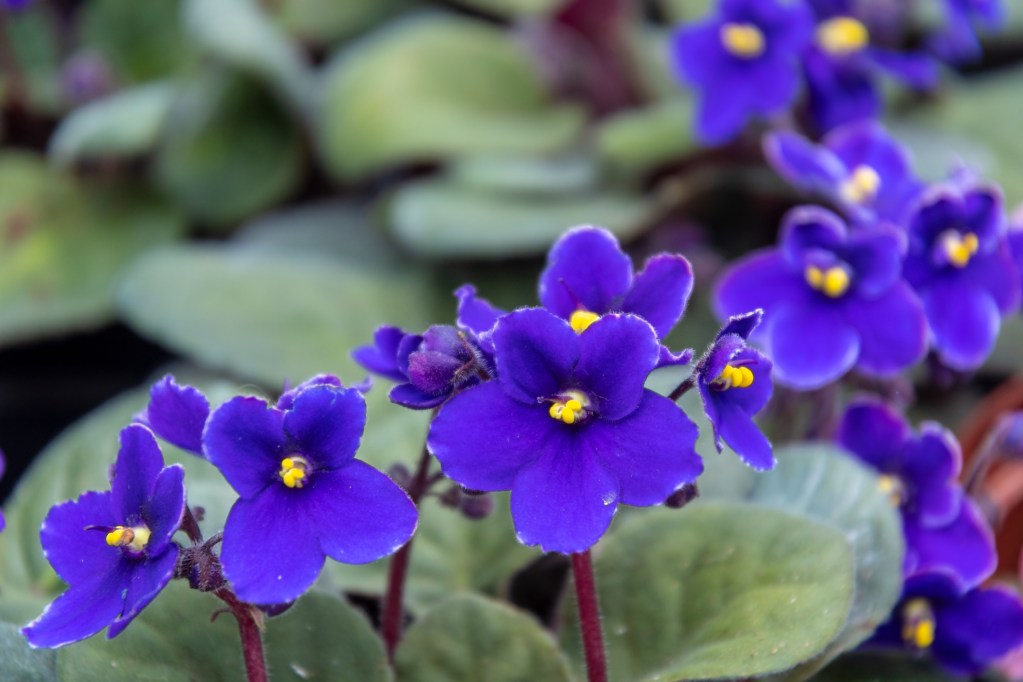
African violet
Although people commonly grow it as an indoor plant, the African violet flower, or Saintpaulia plant, can actually thrive outdoors and make for a lovely bush in your fairy-tale garden landscape with its fuzzy leaves, fleshy stalks, and vibrant, star-shaped petals. There are literally thousands of African violet varieties to choose from, so it’s helpful to look at your local selection to find the best ones suited to your area.
If you have lower light levels available, the African violet is the ideal plant, as it doesn’t typically like direct light. It also does best with high humidity and a moderate 65 to 75 degrees Fahrenheit. It can survive moderate drought, so let the soil dry out halfway before you water it again. Take care not to get water on the leaves, as this can rot them.
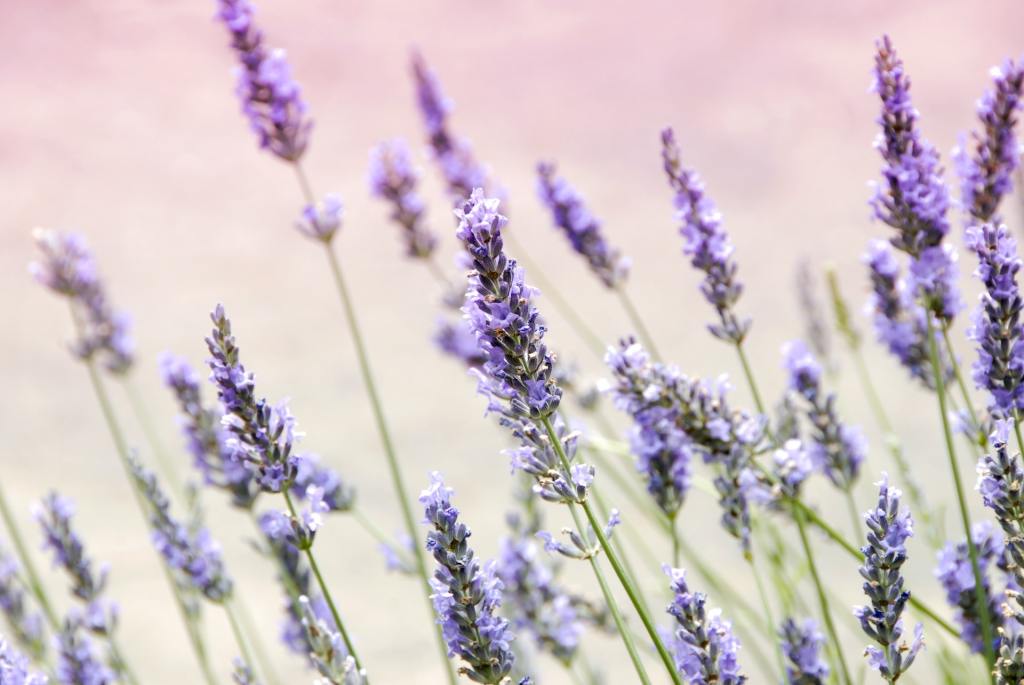
Lavender
Of course, a fairy-tale garden should smell as beautiful as it looks. Perhaps the epitome of a cottagecore flower, lavender features gray stalks of beautiful, dainty purple flowers with an herbaceous fragrance. Whether you grow it in a container or the ground, you can bring lavender outside once your last frost passes.
If you live in a warmer region, lavender should be one of your go-to perennial flowers, as it loves full sun and tolerates drought. You can add compost to the soil during spring, but lavender isn’t a heavy feeder.
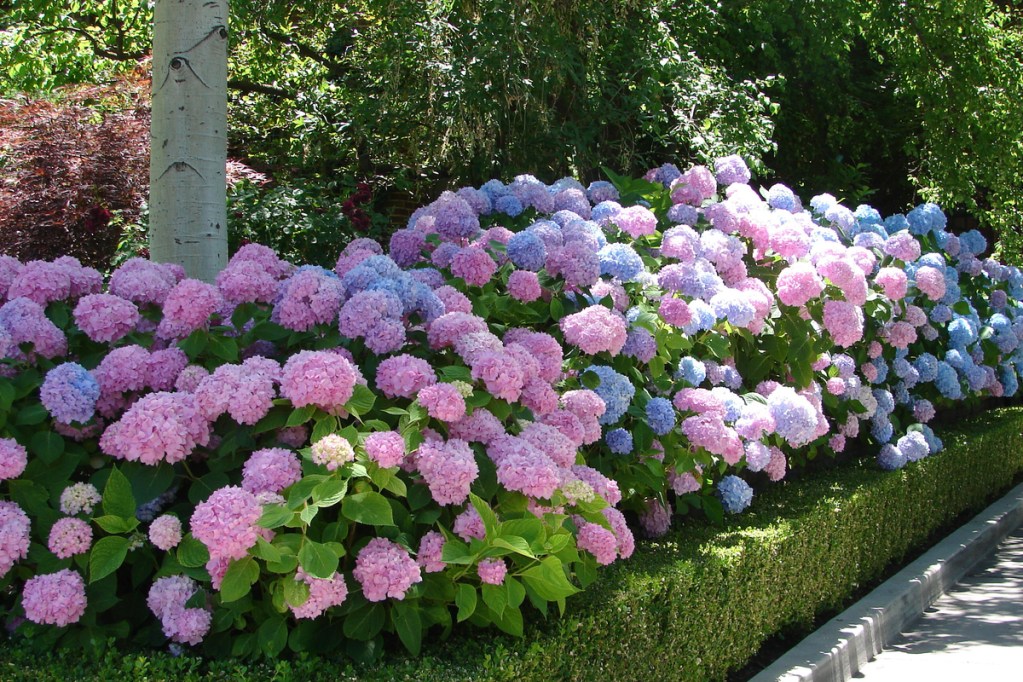
Hydrangea
Hydrangea flowers can add fullness to your garden, with their bushy growth and lush colors. They grow prolifically and are relatively easy to cultivate. Spring is one of the best times to grow hydrangeas so your flowers can establish their roots for a hot summer. Before you plant your hydrangeas, find an area where they can receive bright morning sun but shady afternoons.
While they can tolerate many soil types, you want to water your hydrangeas deeply every week for vigorous blooms. Keep deadheading your hydrangeas to encourage blooming until autumn — the blooms make for beautiful cut flowers to extend the fairy-tale aesthetic into your home. How much fertilizing your plant needs depends on its variety, but hydrangeas aren’t generally heavy feeders.
To curate the charming, romantic fairy-tale garden of your dreams, add these whimsical flowers to your spring plant shopping list. From lily of the valley to lavender, you’ll find that many common cute flowers can lend your space a delicate flair. With a bit of care for your flowers, you’ll find beautiful blooms in abundance as the years go by.

